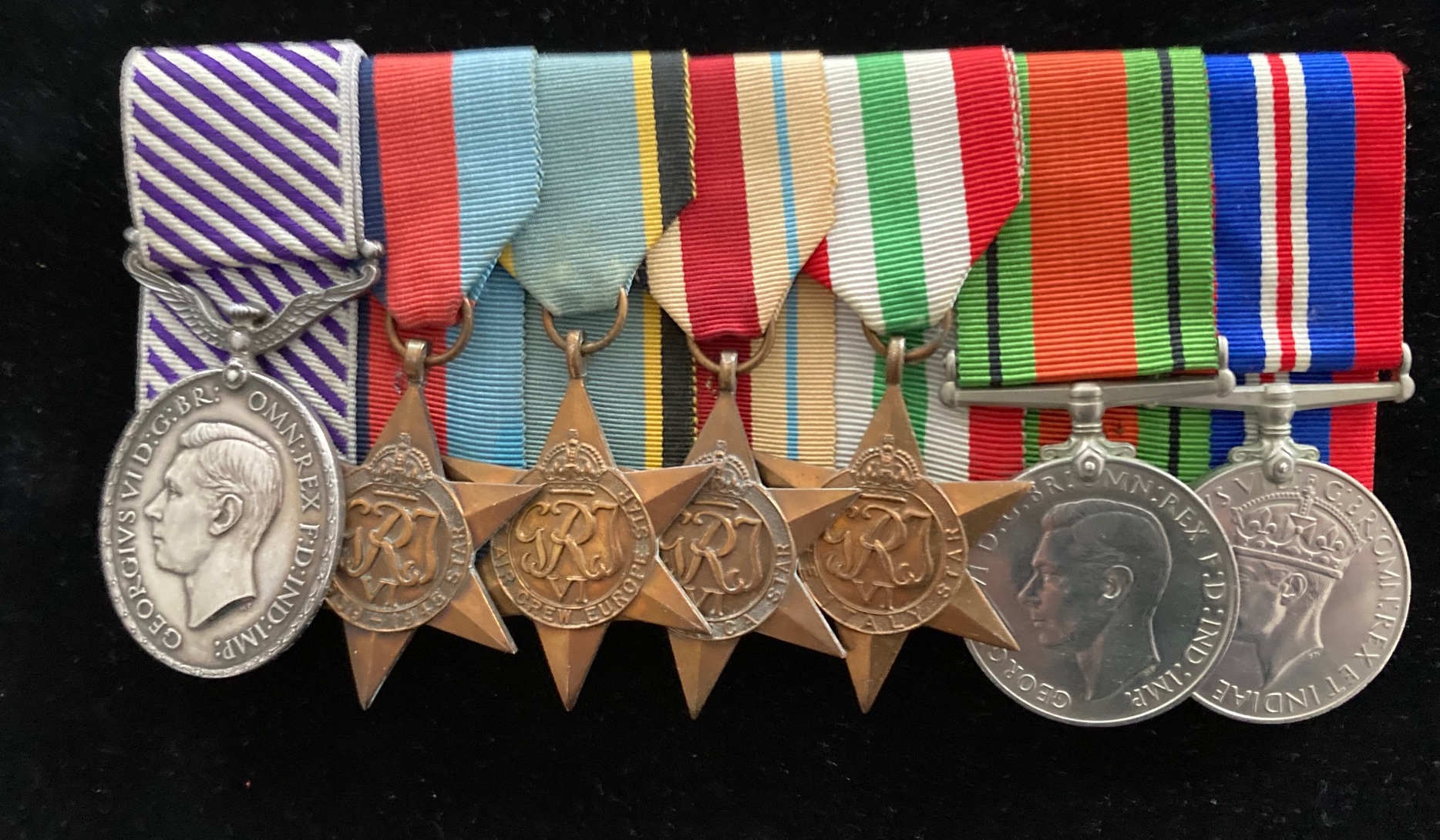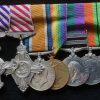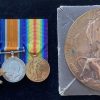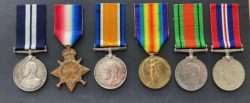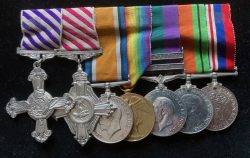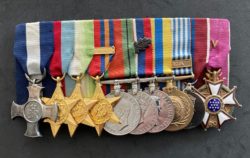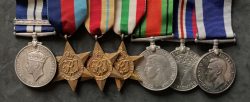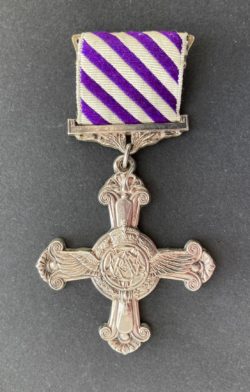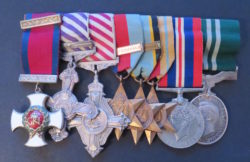-
×
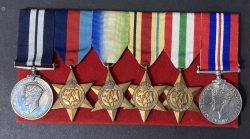 Distinguished Service medal group (GV1) , excellent Merchant Seaman award for the action between Armed Merchant Cruiser (previously RMMV) Caernarvon Castle and the German Raider ‘Thor’, 5 December 1940. Later served Operation Pedestal , the epic Malta convoy (oil tanker Ohio) where aboard and surviving the sinking of MV Wairangi when torpedoed and sunk by enemy torpedo boats
1 × £1,675.00
Distinguished Service medal group (GV1) , excellent Merchant Seaman award for the action between Armed Merchant Cruiser (previously RMMV) Caernarvon Castle and the German Raider ‘Thor’, 5 December 1940. Later served Operation Pedestal , the epic Malta convoy (oil tanker Ohio) where aboard and surviving the sinking of MV Wairangi when torpedoed and sunk by enemy torpedo boats
1 × £1,675.00
Subtotal: £1,675.00
